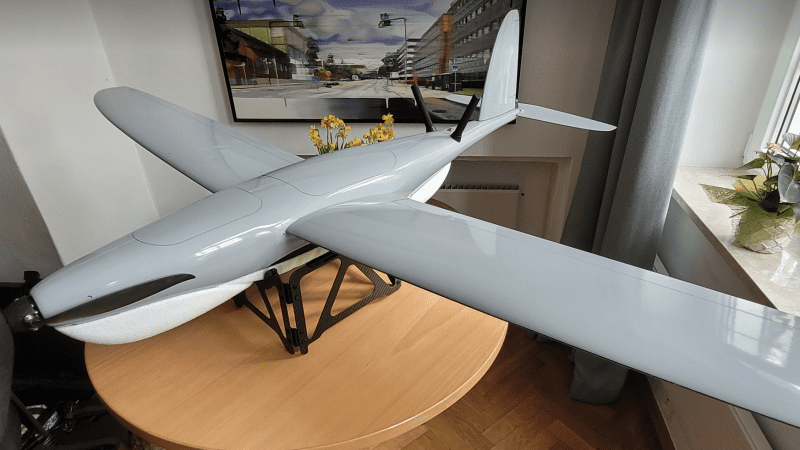Industry
Heidrun UAV Proving Its Worth in Ukraine

Photo. Maciej Szopa/Defence24
The Danish embassy invited representatives of the military and uniformed services to attend a demonstration of the Danish RQ-35 Heidrun UAV. The manufacturer’s (Sky-Watch) representatives have demonstrated the experience gathered when this system was being operated in Ukraine, for instance, to direct artillery fires.
Heidrun is a mini UAV that uses a single conventional fixed-wing airframe. The system can operate within a 20 km radius, from an antenna coming in a form of a small radio, similar to a military-grade tactical radio. It is also possible to use a heavier, tripod-supported antenna - it extends the operational radius to 30 kilometers. The system may be controlled with the use of a rugged laptop or tablet. The Ukrainian experiences show that the system should be offered with two control devices though. One for the person handling the RPA, the other for the payload operator (observation sensor for tracking the adversary and designating target coordinates).
So far, the sensors allowed the RQ-35 to work flying at altitudes of 400-600 meters. The newer variant can fly at 1,000 meters while observing targets at a 2-3 kilometers distance. The RPA, with payload, weighs just 2.5 kilograms, hence it can be hand-launched, and land on its belly, without any extra landing aids. The aircraft is also stealthy, thanks to its low IR signature, and the use of carbon in its structure.
Heidrun is currently manufactured at a rate of 20-25 systems (one UAV per system) per month. This year, given the major market interest, the manufacturing output is expected to be doubled. The system is also offered in Poland. In the Polish Armed Forces, it could fill in the gap between small (micro) quadcopter UAVs, and conventional mini-class fixed-wing UAVs. The manufacturer would like to offer that system at the company level, and the representatives were explaining that thanks to the deployment of the system among the Ukrainian territorial defence units, the commanders were not depending on civilian drones or expensive drones deployed by the operational-level units.
